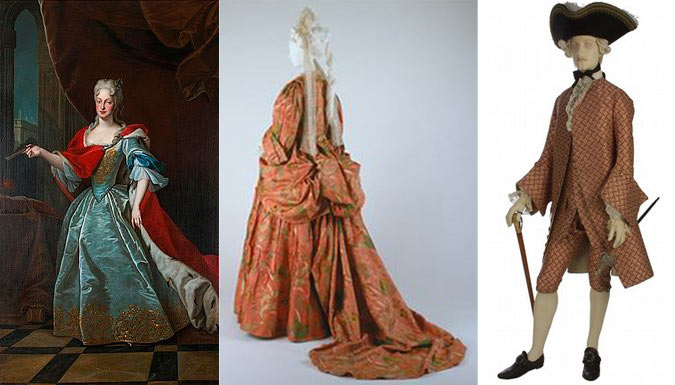Renaissance Refinement: Ornate Fashion in the Age of Rebirth

In the rich tapestry of history, the Renaissance stands as an era of profound transformation and rebirth. This period, characterized by a resurgence of art, culture, and intellectual exploration, also witnessed a remarkable evolution in fashion. From the emergence of delicate lace to the symbolic elegance of ruffled collars and cuffs, the Renaissance brought forth a new chapter in the story of sartorial refinement.
Lace’s Emergence in Renaissance Fashion
As the Renaissance unfolded its petals, fashion blossomed into an art form that mirrored the vibrancy of the era. Among the notable developments was the emergence of lace, a delicate and intricate fabric that would come to symbolize elegance and luxury. Lace, with its fine threads woven into exquisite patterns, adorned garments with an ethereal beauty that captured the imagination.
Lace was not merely a decorative element; it was a testament to the craftsmanship of the time. Skilled artisans meticulously crafted lace by hand, transforming it into intricate collars, cuffs, and even entire garments. This delicate embellishment added a touch of opulence to Renaissance attire, elevating it from mere clothing to wearable art.
The Elegance of Ruffled Collars and Cuffs
In the symphony of Renaissance fashion, ruffled collars and cuffs played a central role, rendering an air of refinement and grace. These ornate frills were more than just embellishments; they were symbols of social status and cultural sophistication. Ruffled collars framed the face with a delicate flourish, while cuffs adorned with intricate pleats added a touch of drama to the sleeves.
The ruffled collar, known as a “ruff,” was a quintessential element of both men’s and women’s fashion during the Renaissance. It transformed the neckline into a canvas for artistic expression, with varying sizes and shapes creating different silhouettes. The cuffs, with their cascading layers of fabric, added a sense of movement and grandeur to the sleeves, evoking an aura of regality and elegance.
Layers of Symbolism: Ruffs as Social Signifiers
In the courts and salons of the Renaissance, fashion was a language of its own, speaking volumes about the wearer’s identity and position in society. Ruffled collars, with their intricate layers and meticulous pleating, were laden with symbolism. They indicated not only a person’s social status but also their adherence to cultural norms and etiquette.
The size of the ruff often denoted one’s rank or wealth. Elaborate, towering ruffs were favored by the upper echelons of society, while more modest ruffs were worn by those of more modest means. Ruffs were also used to accentuate the neck and face, drawing attention to the wearer’s countenance and enhancing their presence in a social setting.
Fashion as Art: The Influence of Portraiture
In an era where artistic expression flourished, portraiture emerged as a powerful medium for capturing the essence of Renaissance fashion. Paintings from the period provide a vivid window into the sartorial sensibilities of the time, showcasing the intricate details of garments, including the famed ruffled collars and cuffs.
These portraits not only immortalized the fashions of the era but also conveyed a sense of identity and self-presentation. The way individuals posed, the garments they wore, and the accessories they chose all communicated messages about their personality and social standing. Fashion became a means of visual storytelling, a way to leave an indelible mark on the canvas of history.
A Legacy of Opulence: Influence on Modern Fashion
The influence of Renaissance fashion extends far beyond its time, leaving an enduring legacy that continues to inspire contemporary design. The delicate artistry of lace, once reserved for the elite, has found its way into modern garments, gracing wedding dresses, evening gowns, and even everyday attire with a touch of timeless elegance.
The regal allure of ruffled collars and cuffs has also left its mark on modern fashion. Designers pay homage to the ornate frills of the past, infusing their collections with elements that echo the refinement of the Renaissance. Runways come alive with garments adorned with cascading ruffles, capturing the essence of grandeur and sophistication.
Conclusion: A Resplendent Revival
As we reflect on the Renaissance’s impact on fashion, we are reminded of the resplendent revival that took place during this era of rebirth. The emergence of lace and the symbolism of ruffled collars and cuffs are threads that connect us to a time of opulence and refinement. The Renaissance, with its fusion of art and attire, invites us to explore the intricate interplay between history and style.
The delicate beauty of lace and the grandeur of ruffles stand as testaments to the artistry and craftsmanship of a bygone era. They remind us that fashion is more than mere clothing; it is a canvas for self-expression, a language of culture and identity. As we celebrate the Renaissance’s enduring influence, let us embrace the elegance and sophistication it has bestowed upon the world of fashion—a legacy that continues to inspire, delight, and adorn the tapestry of our lives.


